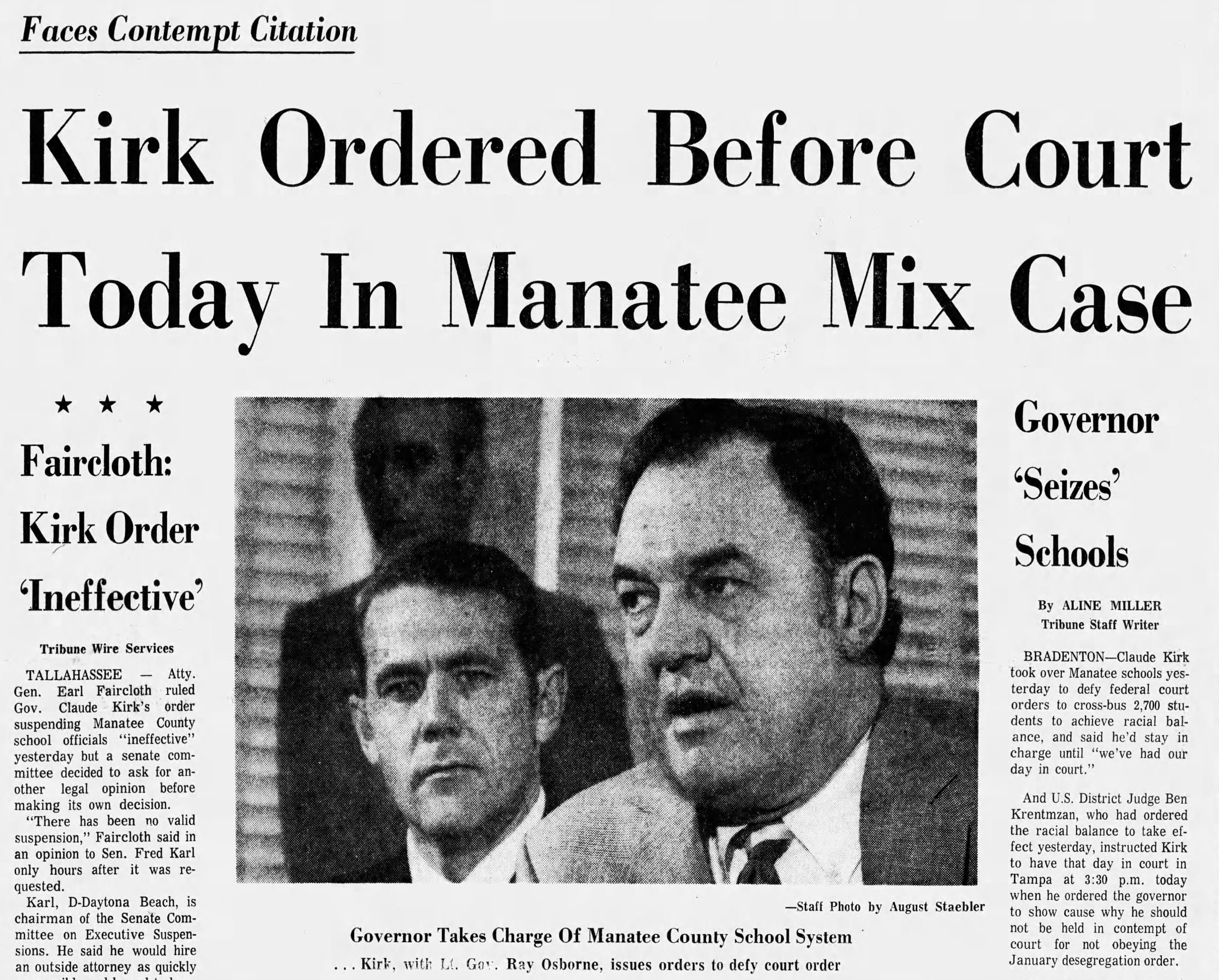The Supreme Court’s ruling in Brown v. Board of Education in 1954 clearly stated that separate was not equal. The court’s subsequent decision (Brown II) the next year ruled that integration be undertaken “with all deliberate speed” but did not specify precise timelines. It allowed school districts to show “good faith” efforts to end segregation and qualify for federal funding, which slowed efforts to integrate the schools. This tactic allowed states, including Florida, to stall racial integration longer. In Manatee County, schools were situated in segregated neighborhoods that were not conducive to integration. These “freedom of choice” policies, which allowed for Black students to attend white schools typically outside of their neighborhoods, maintained the segregated status quo to a great extent, though it met the technical requirements for integration under the 1964 Civil Rights Act.[1] However, these freedom of choice plans, as originally conceived, discouraged Black students from attending white schools by requiring that the Black students provide their own transportation. Busing would have enabled Black students to attend better-resourced white schools more easily.
More than 10 years after the Brown II decision, the NAACP brought action against the Manatee County School Board to force the schools to desegregate. The school board proposed three remedies, including a busing plan, which the Supreme Court accepted and in January 1970, the court ordered the plan be implemented by April 1970. The School Board of Manatee tried to stop the ruling and appeal it, which was denied by the court. The school board then moved to have a new trial and a new hearing. The court again denied the motion.
Governor Claude Kirk, a staunch opponent to busing – who even had an anti-busing plank in his re-election bid – moved to interfere with the implementation of the court-ordered busing. Governor Kirk and the lieutenant governor took over the Manatee County school board, and Kirk installed himself as superintendent. After refusing a judge’s order to appear in court, an assistant U.S. attorney and federal marshals turned up at the superintendent’s office, and a fight broke out between the marshals and governor’s aides. The two opposing parties argued on opposites of a locked door. The governor ultimately backed down when the judge charged him with contempt and ordered a daily fine of $10,000.[2]
References:
[1] Houston, Benjamin. “Voice of the Exploited Majority: Claude Kirk and the 1970 Manatee County Forced Busing Incident.” The Florida Historical Quarterly, vol. 83, no. 3, 2005, pp. 258–86.
[2] Deidre Cobb-Roberts and Barbara Shircliffe, “The Legacy of Desegregation in Florida”, in Kathryn M. Borman and Sherman Dorn, Eds. ‘Education Reform in Florida: Diversity and Equity in Public Policy. Albany, New York: State University of New York Press, 2007.
